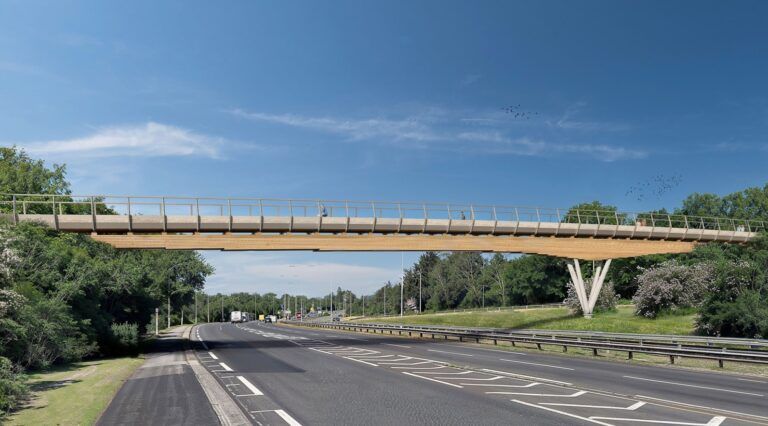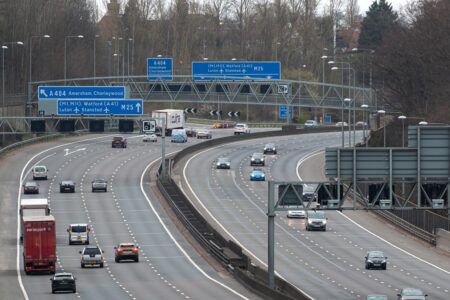National Highways has announced the winner of the Lower Thames Crossing low carbon footbridge contest, with the winning design from Arup and Seán Harrington Architects setting a new benchmark for sustainable design that could be replicated across roads UK-wide.
The winning design beat 32 entries who were judged on their proposed use of low-carbon materials and construction methods, and evidence of good design principles to allow ease of access and a pleasant crossing experience.
The Arup and Seán Harrington Architects design eliminated all concrete from the bridge and approach ramps, and integrated planting into the design to promote habitat connectivity.
The Lower Thames Crossing is a new road and tunnel under the River Thames that will connect the A2 and M2 in Kent, to the A13 in Essex and M25 in the London Borough of Havering.
According to National Highways, it will drive economic growth by tackling congestion at the Dartford Crossing and creating a new connection between the ports of the southeast, the midlands and the north.
In July 2024, the project launched a low-carbon footbridge contest to find a sustainable design for a crossing over the A127, at the northern end of the Lower Thames Crossing route. The footbridge would restore the connection between Moor Lane and Folkes Lane, which was severed when the A127 was opened in 1924.
It will also offer the local community an uninterrupted route between local green spaces such as Thames Chase Forest Centre, Folkes Lane Wood, and Hole Farm Community Woodland, the new 100-hectare woodland being created in partnership between the Lower Thames Crossing and Forestry England.
The competition is part of the project’s plans to be the greenest road ever built in the UK. As a pathfinder project exploring carbon neutral construction, the project will reduce its own carbon footprint and drive change throughout the UK construction industry by scaling up the use of low-carbon materials and methods.
It will create six times more green space than road, and includes one million trees, a community woodland, two new public parks and 40 miles of new and improved pathways for walkers, cyclists and horse riders.
Shaun Pidcock, program director, Lower Thames Crossing, said, “The Lower Thames Crossing will not only drive economic growth, but it will also redraw the blueprint for modern, sustainable infrastructure. The low-carbon footbridge contest is one example of how we are tackling carbon in construction and helping restore nature.
“It was incredibly heartening to see the new ideas and creativity from the industry. We had a hard job choosing winner from all the high quality entries, but are delighted with the winning design and look forward to seeing it come to fruition and hope it inspires other designers to aim for low carbon solutions everywhere,” Pidcock added.
The Lower Thames Crossing received planning permission in March 2025 and is now working with the government on funding options. Construction could start as early as 2026, with the new road expected to open in the early 2030s.





